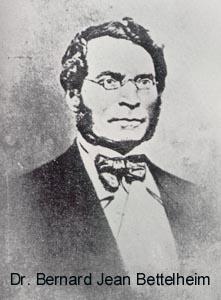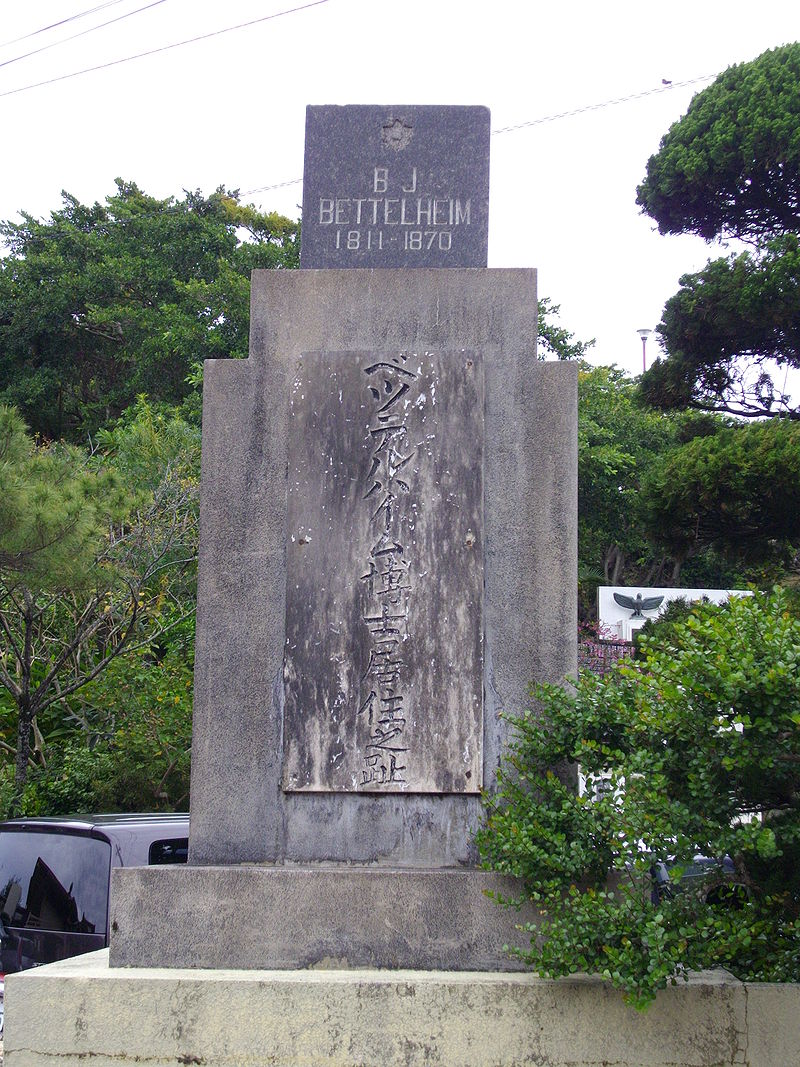
|
|
Bernard Jean BETTELHEIM (1811-1870)
an overview
November 4, 2019
|
Bettelheim, his wife and two infant children went first to Hong Kong, where they consulted with other missionaries, notably Rev. Karl Gützlaff, a colourful and controversial early Protestant missionary, and Dr Peter Parker, first medical missionary to China. On April 30, 1846, the Bettelheims landed at Naha, the Ryukyuan capital aboard the British ship Starling, accompanied by his wife, Elizabeth M., their infant daughter, Victoria Rose (born 1844), their infant son, Bernard James (born November 1845), "Miss Jane", a tutor and schoolmistress, and Liu Yu-Kan, a Cantonese translator. Local officials made the first of many attempts to get them to leave. They refused, and the official temple where they had been allowed temporary shelter became their permanent home. The local port master objected to the missionary's disembarking; the Starling's captain did not challenge him, and aimed to keep the Bettelheims on board. However, Dr. Bettelheim had other ideas. He bribed several members of the crew to help him in transporting his possessions into the Okinawan ships, while the doctor invited a number of Okinawan dockhands below decks, and entertained them with drink. Intoxicated, the Okinawans were persuaded to take the Bettelheims, and their possessions ashore. When they arrived it had already grown dark and was too late to turn back. The local officials offered the family shelter in the Gokoku-ji temple for the night, and the priests in residence there left, out of respect for the women's privacy. The following morning, the Bettelheims refused to leave. They would remain in the Gokoku-ji for seven years! Bettelheim spent his time studying Chinese and the local language, and preaching at every public gathering he could find. His intercourse with the locals was supervised and increasingly obstructed, so that accounts of medical practice mostly concern his family and minders. For instance, he requested leeches to treat his daughter, and lectured officials on the importance of venesection in “paralysis, apoplexy, and other acute inflammatory diseases”. Sometimes his treatments were homoeopathic, sometimes heroic, as in the use of calomel and julep as purging therapy, or blistering and mustard plasters (“synapism”) on the shaved head for fever. Mrs Bettelheim suffered frequent headaches, for which she refused to allow him to bleed her, preferring purgatives instead. |
Bettelheim had quite an attitude and it didn't set well with the Ryukyuan authorities. As an example of Bettelheim’s attitude and ego, when “a well-dressed, dignified port officer came off to greet the captain (of the Starling) and to enquire of his needs … Bettelheim believed that perhaps the King of Ryukyus himself had come out to welcome him.” Another incident, in December 1849, resulted in Bettelheim receiving a beating from the locals after he had commandeered some farmer’s produce.
Everywhere the Bettelheims went, guards ran ahead ordering all doors locked. So they took to entering homes through the back alleys, and delivering their evangelistic lectures to whomever they could find. Occasionally Bettelheim experienced evangelistic success—in one case, a young guard who began to confess belief in Jesus was declared mad by his family and kept shackled at home. Occasionally these same guards asked for treatments, as when Bettelheim sent one who had “anarsarca” (generalized edema/swelling) a drastic purgative with calomel together with “a homeopathic sprinkle of cantharid [probably Cantharis, Spanish fly]” to good effect. But these requests were usually made with pleas for secrecy. On the other hand, one of the interpreters, Ichirazichi, who was also an interpreter to the ruling regent of the Ryukyus and later a minister, asked for “an ointment for the itch”, which cleared his skin, and then complained that the native doctors had treated a malignant boil with moxa to no avail, so Bettelheim provided him with emplastrum vesicantia[blistering plaster]. This proved so effective that the patient asked for instruction in western materia medica. In 1849 Bettelheim received a new supply of vaccine matter, and offered to vaccinate the Ryukyuans. This was refused, but during an 1851 smallpox epidemic, officials imported smallpox scabs from China to use in variolation, the deliberate inoculation of smallpox matter into healthy children. Bettelheim advised Ichirazichi in how to inoculate into the skin using a lancet—preferably with a drop of human milk!—instead of blowing the smallpox matter into the nose, and reported that the unusually mild course of the disease that year was attributed to the new methods he had taught.
Sources: Other links on this site that refer to Bettelheim: The Lewchewans; being a Narrative of a visit to LEWCHEW, OR LOO CHOO, IN OCTOBER, 1850 by George Smith, D.D. Lord Bishop of Victoria 1853 RYUKYU - Kingdom and Province before 1945, G. Kerr (.pdf d/l)
|
©2019 Contact: ClickOkinawa.com


